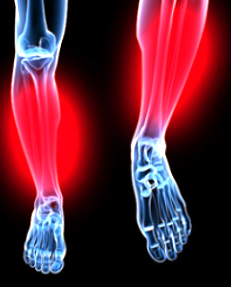Shin Splints
Shin Splints
The vague medical term shin splints has largely been replaced by the more accurate diagnostic term medial tibia stress syndrome (MTSS). Shin splints / MTSS is one of the most common injuries reported by runners and professional athletes.
Shin splints are a painful condition in which there is excessive stress and inflammation on the shinbone (tibia), the thin membrane of the shin bone and surrounding muscles. The common categories where patients normally complain of pain are at the inside of the shinbone (medial) and the front of the shinbone (anterior).
MTSS most commonly starts with tightness, diffuse pain and tenderness along the lower aspect of the front or inside edge of the shinbone (tibia) with physical activity. The symptoms are often worse at the beginning of the exercise and subside with rest but return as soon as the activity is resumed. Progression of untreated MTSS can often lead to stress fracture of the shinbone (tibia).
The problem is common in athletes who perform repetitive activities such as walking as well as activities that involve running and jumping. Shin splints is usually caused by doing too much, too quickly. Patients with shin splints typically report a recent change in training, such as increasing the usual pace, adding distance, or changing running surfaces. People who haven’t run for a while are especially prone to shin splints after they first get started, especially when they run downhill.
The most common causes of shin splints are;
- Over exercising and sudden increase in activity.
- Biomechanical abnormalities
- Flat feet (over pronation) – When the foot contacts the ground taking all our weight, it rolls inwards (pronates) to absorb the shock of our body weight. One of the important muscle groups helping to control this motion are the muscles in our shins. When the foot pronates too far or too fast these muscles are overworked and become fatigued and painful.
- High arch feet (supination).
- Calf tightness or lower leg muscles.
- Poor footwear – exercising in shoes with inadequate support and/or cushioning.
Treatment
A detailed assessment assessing training details (running distance, intensity, terrain, frequency, running footwear) and other causative factors will be performed. The aim of shin splint/MTSS treatment treatment is to reduce the amount of the excessive pronation of the foot which will in turn reduce the overworking action of the Tibialis Posterior muscle which is one of the main causes of shin pain. Orthotics offer excellent shock absorption due to the material used and will restore the foot and its posture to the right biomechanical position.
At Sydney Foot Clinic some additional treatment modalities offered include;
- Rest and Ice – keeping off the foot and reducing activity prevents further injury and encourages healing and reduction of pain. Ice can reduce inflammation, swelling and symptoms.
- Non-steroidal anti-inflammatory medication – help reduce the pain and inflammation.
- Supportive footwear.
- Custom made orthotic therapy – orthotics may be prescribed to address any biomechanical factors such as over pronation (flat feet).
- Muscle stretching and Exercises to reduce the stress of the muscles acting on the lower leg.

